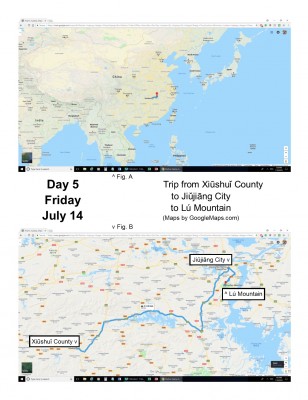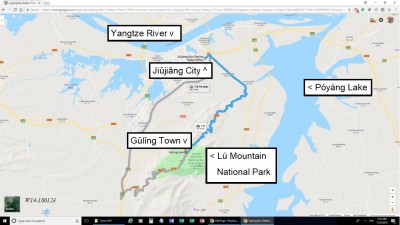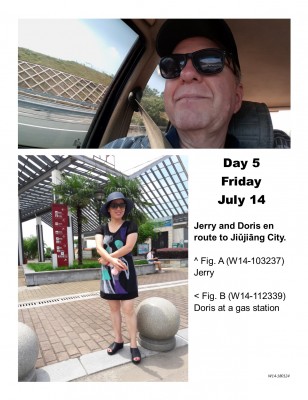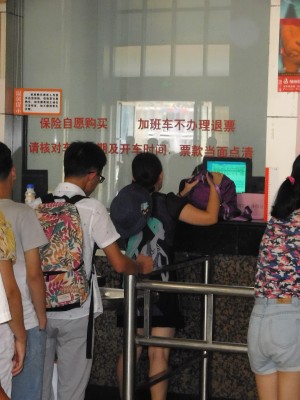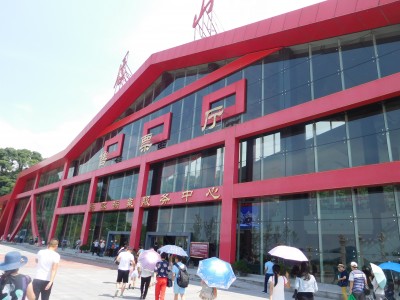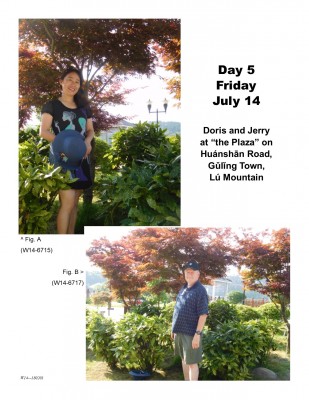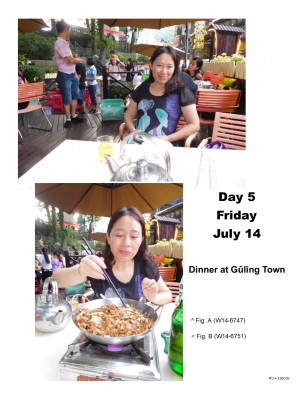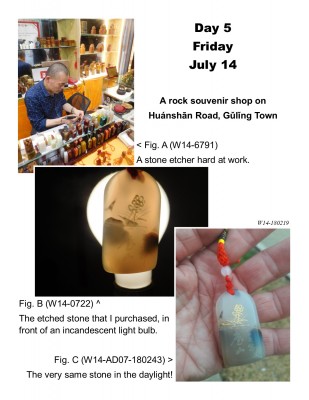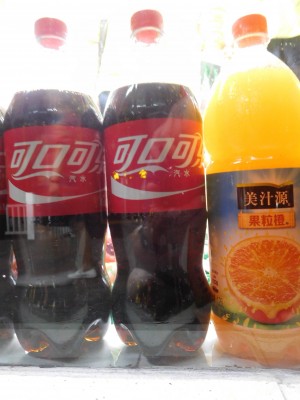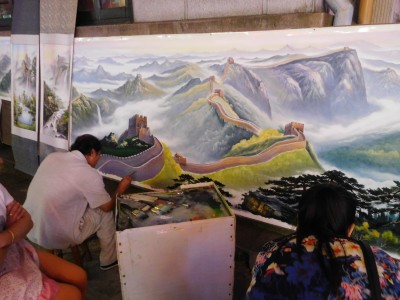Xiushui to Lushan
(Doris’ Hometown to Lu Mountain)
(Click or tap on the figures on this page for a larger view. Click or tap on “Back” or “Previous” (<-) to return to this page. Don’t click on “Exit” or “Close” (X), lest you be returned to who-knows-where!)
^ Fig. 1 (W14-180122)
The trip from Xiushui County to Jiujiang City, and then to Guling Town on Lu Mountain.
Jerry’s pronunciation guide (Click here):
- Guling Town (“goo leeng”) (牯岭镇 gǔ lǐng zhèn)
- Huanshan Road (“hwahn shahn”) (环山路 huán shān lù)
- Jiujiang City (“jyoh jyahng”) (九江市 jiǔ jiāng shì)
- Lu Mountain, also known as Lushan (“loo shahn”) and Mount Lu (庐山 lú shān)
- Poyang Lake (“pwo yahng”) (鄱阳湖 pó yáng hú)
- Xiushui County (“syoh shwey”) (修水县 xiū shuǐ xiàn)
- Yangtze River (English pronunciation: “yang tsee”) (长江 cháng jiāng, “Long River”)
^ Fig. 2 (W14-180123)
The trip from Jiǔjiāng City to Gǔlǐng Town. Notice the winding road as it ascends Lú Mountain.
^ Fig. 3 (W14-180124)
Doris and I en route to Jiǔjiāng City. We hired a shared car from Xiūshuǐ to the Jiǔjiāng inter-city bus station, similar to Uber or Lyft here in the United States. It was a direct drive from one city to another (Xiūshuǐ to Jiǔjiāng), and it was nonstop except for occasional potty breaks. Pretty cool and efficient.
^ Fig. 4 (W14-6618)
Entering Jiǔjiāng City, where Doris lived and worked for 20 years or so (see Fig. 1 above).
^ Fig. 5 (W14-6623)
Doris at the Jiǔjiāng City bus station, buying tickets for the bus trip up to Gǔlǐng Town on Lú Mountain.
^ Fig. 6 (W14-6638)
The entrance to Lúshān National Park.
^ Fig. 7 (W14-6658)
Entering Gǔlǐng Town, Lú Mountain.
^ Fig. 8 (W14-180127)
Overlooking Gǔlǐng Town (Gǔlǐngzhèn in the center of the figures) and Jiǔjiāng County (to the northwest, in the valley below). We approached Gǔlǐng from the northeast on Highway S213.
^ Fig. 9 (W14-6703)
Doris and I wandering along Huánshān Road in Gǔlǐng Town, Lú Mountain. She appears in the video at around 00:11 (around 11 seconds into the video). She’s wearing a flowered black dress and a purple backpack.
^ Fig. 10 (W14-180201)
Doris and I at “the Rock” on Huánshān Road (“hwahn shahn”), Gǔlǐng Town, Lú Mountain.
^ Fig. 11 (W14-80201b)
Doris and I at “the Plaza” on Huánshān Road.
^ Fig. 12 (W14-180203)
Houses and hotels built into the side of Lú Mountain, Gǔlǐng Town.
^ Fig. 13 (W14-180204)
Dinner at Gǔlǐng Town, Lú Mountain.
^ Fig. 14 (W14-6797)
Huánshān Road, Gǔlǐng Town, Lú Mountain, at night.
^ Fig. 15 (W14-180219)
A rock souvenir shop on Huánshān Road, Gǔlǐng Town.
^ Fig. 16 (W14-6795)
Window-shopping in Gǔlǐng Town. The two bottles on the left are Coca-Cola in Chinese,
可口可乐 in Simplified Chinese writing, 可口可樂 in Traditional.
How you pronounce it in Chinese depends on which Chinese language you’re speaking. E.g., 可口可乐 is pronounced something like:
- “kuh koh kuh luh” (kě kǒu kě lè) in Mandarin, the majority Chinese language spoken throughout China, Taiwan, and many places around the world. Mandarin is usually the language referred to when people say something like “She speaks Chinese.”
- “hak hao hak lok” or “ho hao ho lok” in Cantonese, the predominant language spoken in Hong Kong, Guǎngdōng Province, southern China, and many places around the world.
- “ku ka ku lo” in Shanghainese, a major Chinese language spoken around Shanghai and surrounding areas.
So, what does 可口可乐 mean translated back into English?
It’s translated back to English several different ways, but I think you’ll agree the message is essentially the same:
- Tasty and Delightful
- Delicious and Joyful
- Deliciously-Delightful
- Permit the Mouth to Rejoice
- Good Taste and Joyful
- Tasty Fun
- to suit / suitable / able to // mouth // tasty / taste good // happy / laugh / cheerful
Resources
http://old.7xpub.com/…/1625-delicious-and-delightful-new-ye…
^ Fig. 17 (W14-6803)
A street artist painting the Great Wall of China on one of the side streets of Gǔlǐng Town, maybe Hemian Street (“huh myehn”).
End of Day 5 (Friday, July 14, 2017). We walked about 8876 steps today, about 3.97 miles or 6.39 Km.
